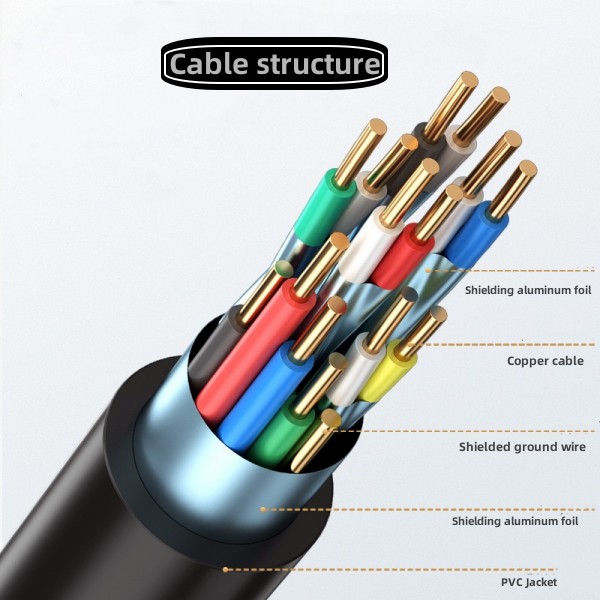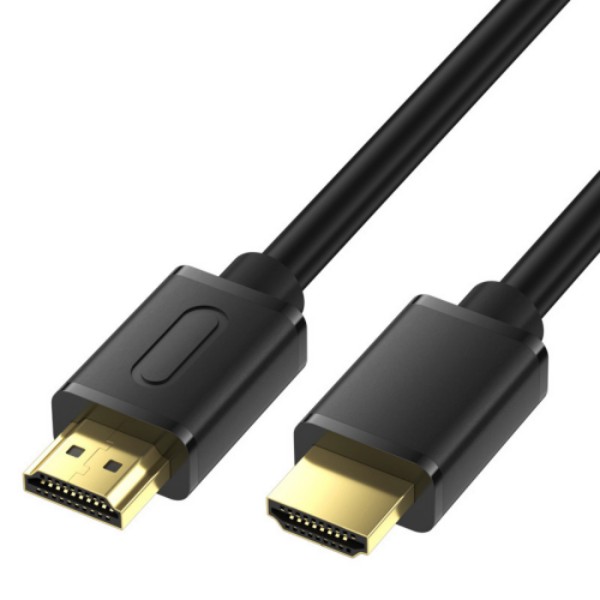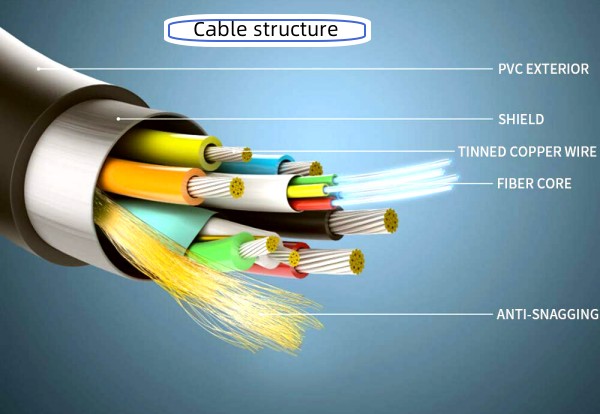From copper to fiber, the evolution of the HDMI cable to the continuous pursuit of updates to the standard
Substantial changes have occurred from one / two years to this part in the field of HDMI cabling. The evolution of the HDMI standard and its capabilities in terms of amount of data and transmission speed has led manufacturers to identify alternative transmission systems. In this context, the increasing convenience, together with the ease of drafting and the reliability of performance, has made the use of AOC (Acitve Optical Cable) active optical technology very popular, especially for connections of a certain length. The approach of the introduction of the HDMI standard in version 2.1, in fact already released but not yet become a market reality, will it bring further acceleration to the transition from copper to optical fiber? And from what point is the latter justified in domestic installation situations?
An initial understanding of the evolution of the HDMI standard will also help to understand the consequences that this evolution has entailed in transmission tools, first of all the connection cable.
1) The first version of the HDMI standard dates back to 2002 : HDMI 1.0. Its maximum bandwidth was 4.95Gbps with support for DVD and Blu-ray discs, the standard for Rec.709 high definition video and 8 channels of 24bit / 192kHz PCM surround sound. In other words we are talking about videos with Full HD resolution at 1080p and 7.1 surround sound.
2) In 2004 the first evolution to the HDMI 1.1 version added support for DVD-Audio, a format that seemed to be able to take hold at the time. While in the following 2005 the HDMI 1.2 version was released with the addition of DSD support, an additional lossless audio format closely derived from SACDs.
3) In 2006 , the introduction of the HDMI 1.3 version intervenes in the video sector by increasing the bandwidth up to 10.2Gbps. It supports xvYCC color space, 2.8 greater than the now narrow sRGB range, and expands audio support to Dolby TrueHD and DTS-HD MA digital surround formats. Subsequently, a series of further implementations were released, however, of minor importance: 1.3a, 1.3b, 1.3b1 and 1.3c. In the same year, the first Blu-ray player in the world with an HDMI interface was launched on the market by Samsung.
4) In 2009 , with the first HDMI 1.4 version, we start talking about 4K (4K 30p and 3D support); Fast Ethernet (100Mbps) network transmission function is also added.
5) 2013 sees the leap to HDMI 2.0 version with a considerable increase in manageable bandwidth (from 10.2Gbps to 18Gbps) with support for 4K 60p signals and compatibility with Rec.2020 color depth as well as 32 audio channels.
6) In 2015 , HDMI 2.0 sees two further implementations: HDMI 2.0a which introduces support for the HDR10 format, and HDMI 2.0b which adds support for HLG (Hybrid Log Gamma), an HDR format developed specifically for television broadcasts.
7) In the now "distant" 2017 HDMI 2.1 is presented, an implementation that brings manageable bandwidth up to 48Gbps, with support for 8K / 60Hz, 4K / 120Hz formats, 16bit color depth and dynamic HDR data management, or Dolby Vison, a more accurate system than HDR10 which is based on static metadata. To date, the devices that support the HDMI 2.1 standard are not yet on the market.
As can be seen from the (summary) descriptive contents the evolution of the HDMI standard, from the HDMI 1.0 version to the HDMI 2.1 version (which is not yet in use), the resolution and the frame rate of the signal have been increasing more and more, which has meaning a consequent increase in the amount of data (a 4K signal is 4 times "bigger" than 1080p). If, metaphorically, we considered the cable as if it were a sort of tube in which data flows, we could say that we needed, through the various evolutions of the HDMI standard, an ever-larger tube to transmit an ever-increasing amount of data. Now, the conductivity of the copper cable that is traditionally used in HDMI connections is basically determined by the number of filaments that compose it. The higher this number,
Not only. The biggest limitation of a copper HDMI connection is the inability to support long distance transmission. Of course it depends on the quality of the materials used and the construction, but in general terms it can be said that by exceeding 10 meters of laying, a copper HDMI cable can begin to suffer from information losses. Furthermore, as the request for transmission speed increases, the attenuation will be greater with consequent loss of signals or reduction of resolution. To manage the transmission of HDMI signals at 18Gbps it is often very difficult to use copper HDMI cables that exceed 12 meters, if not of excellent quality.
At this point, the question arises as to how it is possible to transmit signals at 48Gbps, 56Gbps or higher bandwidth. The traditional cable is too short and therefore its application can only be decidedly limited. For many installations, whether domestic or semi-professional, the HDMI connection in copper appears to be insufficient to meet the demands of the most advanced signals, both under the pure performance aspect and, not negligible, under the practical aspect of installation and installation. In this respect, the market demand is directed towards an HDMI connection that is lighter, thinner and with the ability to ensure performance over longer lengths. All these aspects, technological and practical,
At present, the HDMI AOC on the market basically uses a hybrid solution: copper wire and optical fiber, the first for DDC (Display Data Channel) "handshake" and the second for signal transmission. For the latter purpose it is necessary to subject the signal to two photoelectric transformations in its path from the signal source to the display device. The advantage of this type of connection lies in the fact that the optical fiber is very thin and light, keeping the weight of the cable low, but the most important thing is that the transmission loss of the fiber per kilometer is almost negligible and they are almost eliminated. electromagnetic interference.
These positive aspects do not make the use of the HDMI AOC cable free from problems. The integrated circuitry that provides for the photoelectric conversion of the signal obviously requires a power supply voltage. Insufficient voltage will affect the image quality, for example by providing a less bright and contrasty result with more noise. In fact some connections (see Blustream AOC cables of the Precision series) provide for the presence of a microUSB connection for an additional 5V power supply in order to allow the support of devices with low output voltage. Since the copper HDMI cable does not have these problems, we can say that, at the moment, for short distance transmission, the active optical cable does not act as a substitute for the copper cable, at least as long as it signals at bandwidth. high (i.e. those that necessarily require the HDMI 2.1 version) will not normally become available.
Of course, the situation changes where it is necessary to lay HDMI connections with lengths that exceed 20 meters. The performance and installation aspects make the HDMI AOC option the ideal solution even though the expansion of the market does not favor its economy in absolute terms. Often, however, the alternative is to equip oneself with equipment that use communication systems via CAT for the transmission of HDMI signals with more or less advanced technologies to allow the forwarding of 4K HDR signals at 18Gbps over long distances (see HDBaseT and related hardware extension) with costs certainly no cheaper than direct HDMI AOC cabling. Perhaps the most problematic aspect remains that of the channeling of the HDMI cable, notoriously not so easily achievable due to the size of the terminals and the impossibility of a subsequent termination. In this regard, the builders (seeBlustream Precision Series ) terminate their cables at one end with a mini HDMI connector with removable standard adapter just to facilitate its installation.
So, in summary, we can rightly assume that the HDMI AOC connection may be the connection of the future. Surely the problems of insufficient voltage and high temperature can be solved (and they already are in part) by improving the performance of the photoelectric conversion chip. In the meantime, the copper HDMI cable will be able to act as a valid high-performance solution within lengths of 10m / 15m, until it will gradually be supplanted with the advent of new requirements for managing even more demanding signals.
HDMI Copper Cables



